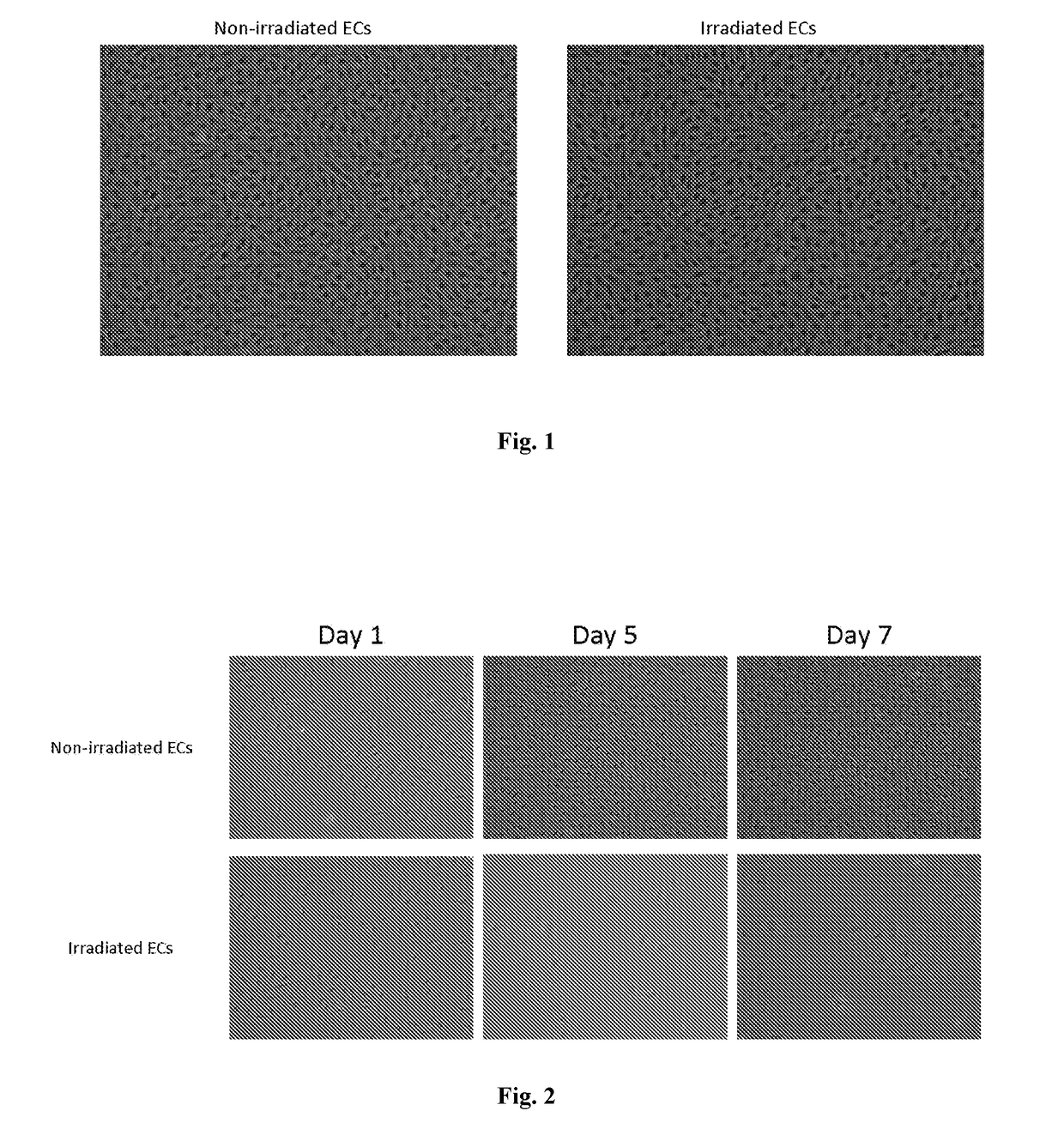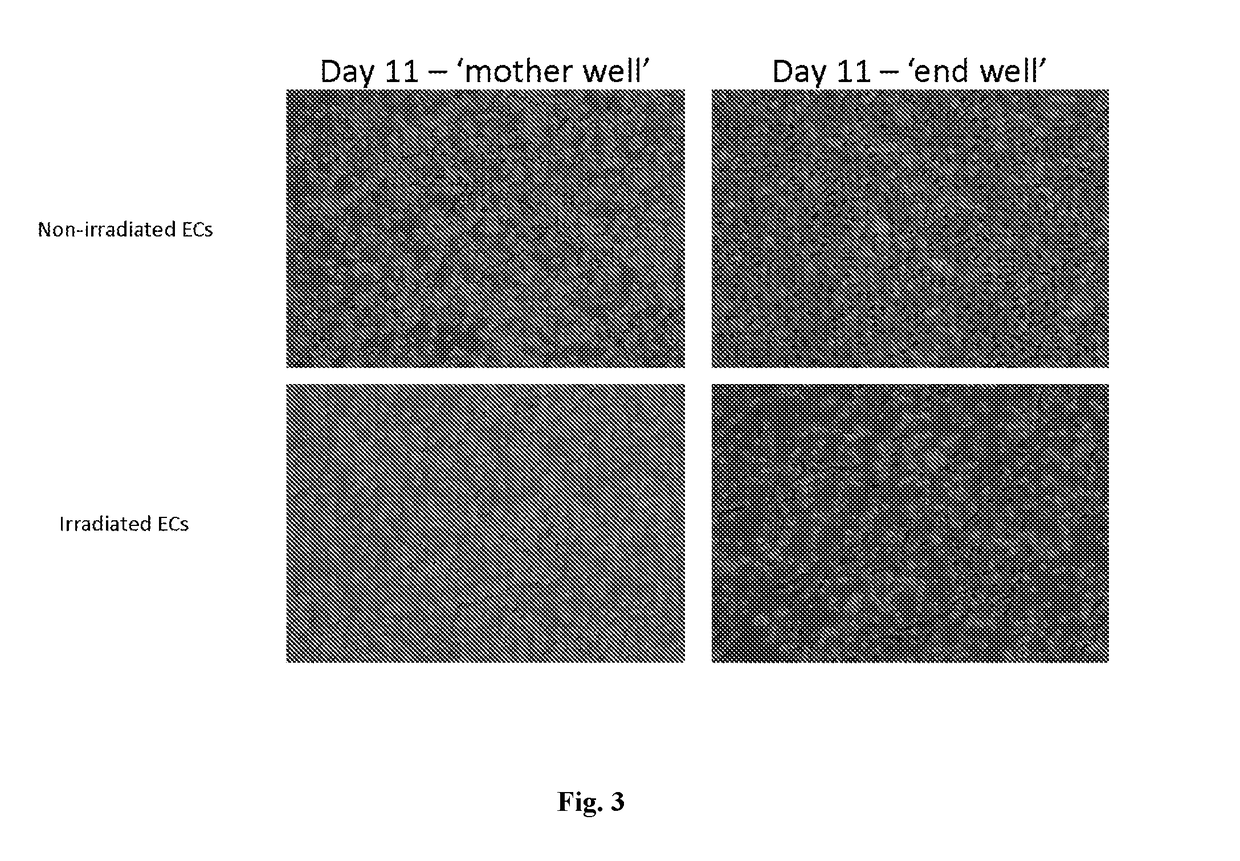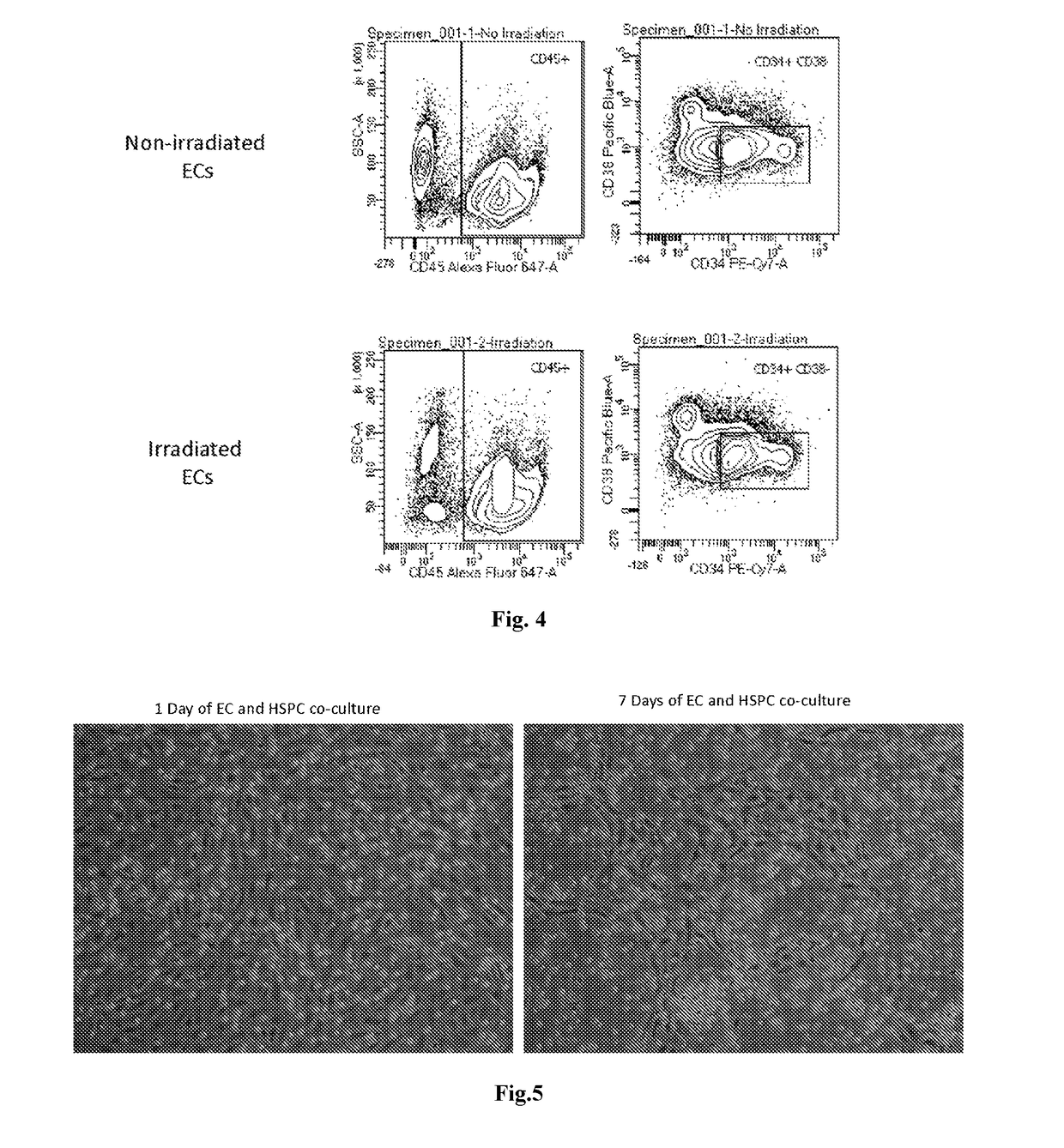Methods and compositions for stem cell transplantation
a stem cell and composition technology, applied in the field of stem cell transplantation, can solve the problems of slow hematopoietic recovery rate, high mortality rate, and slow rate of hematopoietic recovery, and achieve the effect of reducing the number of open events, enhancing the efficiency and overall output of expansion, and lowering the level of hspc expansion
- Summary
- Abstract
- Description
- Claims
- Application Information
AI Technical Summary
Benefits of technology
Problems solved by technology
Method used
Image
Examples
example 1
Expansion of HSPCs with Non-Irradiated ECs
[0101]Non-irradiated E4ORF1+ engineered ECs have the proliferative capacity to be passaged at 1:4 splits approximately 15-20 times in traditional flask based culture. In this method, non-irradiated E4ORF1+ engineered ECs can be expanded to sufficient quantities in flat-surfaced culture vessels to confluence. The amount of cells plated will depend on the amount of starting material and the length of the expansion. For example, a 10 day expansion may require the equivalent of 3 plates worth of 6-well dishes (each approximately 35 mm in diameter). E4ORF1+ ECs are cultured in complete growth medium until confluence in these wells. At confluence, the media is transitioned to conditioning media. After 24 hours in conditioning media, CD34+ purified cells, for example from umbilical cord blood (UCB), can be seeded on the E4ORF1+ EC-pre-seeded wells with cytokines, consisting of 50 ng / ml each of thrombopoietin (TPO), Fms-related tyrosine kinase 3 lig...
example 2
Expansion of HSPCs with Irradiated ECs
[0103]E4ORF1+ engineered ECs are fully competent to expand HSPCs after receiving a mitotic inactivation stimulus, such as radiation or mitomycin C. To utilize the cells after mitotic inactivation, the mitotic inactivation stimulus is administered when the cells are in their final culture vessel at confluence and allowed 24 hours to recover in complete media prior to switching to the conditioning media. For use of mitotically inactivated cells in bioreactors, E4ORF1+ engineered ECs, or ETV2+ E4ORF1+ engineered ECs, or E4ORF1+ E4ORF6+ engineered ECs, are grown until there are approximately 1 billion cells. The cells may be cryopreserved after treatment with the mitotic inactivation stimulus. The entirety of the mitotically-inactivated EC sample is then injected into the bioreactor and allowed to attach for 24 hours. Conditioning of the media follows for an additional 24 hours. CD34+ cells, from UCB for example, are then introduced into the same co...
example 3
CFU Assays
[0104]Colony Forming Units or “CFUs” are a means to judge the stemness of cells in an in vitro model. A known number of cells are plated on a methylcellulose coated culture flask with a defined media (i.e. Methocult). After two weeks, colonies having defined morphologies are formed by presumptive stem cells. These colonies are quantifiable and can be used to give a determination of HPSCs within a given population. The expansion rates of the HSPCs was highest in the bioreactor, followed by the flask-based expansion with the E4ORF1+ ECs, and the cytokine alone expansions providing the least amount of HSPC expansion (see FIG. 7).
Example 4
[0105]Hematopoietic cells, either from freshly isolated umbilical cord blood (un-manipulated), from cells expanded with cytokines alone for 6 days, from cells expanded on E4ORF1+ ECs in a flask for 6 days, or from cells expanded on E4ORF1+ ECs in a hollow fiber bioreactor for 6 days, were all analyzed via flow cytometry. The pop...
PUM
| Property | Measurement | Unit |
|---|---|---|
| time period | aaaaa | aaaaa |
| distance | aaaaa | aaaaa |
| distance | aaaaa | aaaaa |
Abstract
Description
Claims
Application Information
 Login to View More
Login to View More - R&D
- Intellectual Property
- Life Sciences
- Materials
- Tech Scout
- Unparalleled Data Quality
- Higher Quality Content
- 60% Fewer Hallucinations
Browse by: Latest US Patents, China's latest patents, Technical Efficacy Thesaurus, Application Domain, Technology Topic, Popular Technical Reports.
© 2025 PatSnap. All rights reserved.Legal|Privacy policy|Modern Slavery Act Transparency Statement|Sitemap|About US| Contact US: help@patsnap.com



